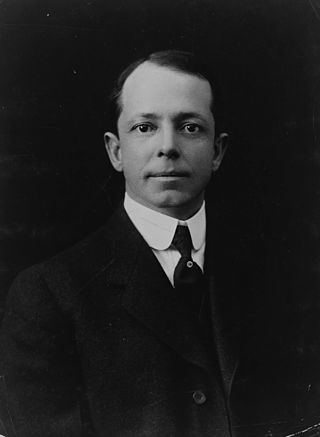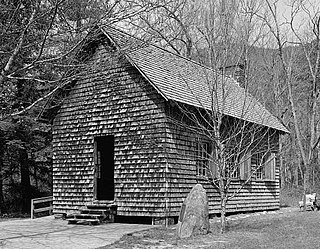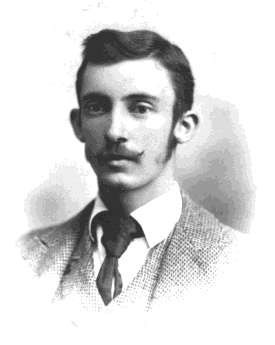Related Research Articles

Gifford Pinchot was an American forester and politician. He served as the fourth chief of the U.S. Division of Forestry, as the first head of the United States Forest Service, and as the 28th governor of Pennsylvania. He was a member of the Republican Party for most of his life, though he joined the Progressive Party for a brief period.

The State University of New York College of Environmental Science and Forestry (ESF) is a public research university in Syracuse, New York focused on the environment and natural resources. It is part of the State University of New York (SUNY) system. ESF is immediately adjacent to Syracuse University, within which it was founded, and with which it maintains a special relationship. It is classified among "R2: Doctoral Universities – High research activity".

Sir Dietrich Brandis was a German-British botanist and forestry academic and administrator, who worked with the British Imperial Forestry Service in colonial India for nearly 30 years. He joined the British civil service in Burma in 1856, shortly afterwards became head of the British forestry administration in all of Burma, and served as Inspector General of Forests in India from 1864 to 1883. He returned to Europe in 1883, dividing his time between Bonn and Greater London. In retirement he dedicated himself to scholarly work, resulting in the book Indian Trees (1906), his magnum opus. Brandis is considered the father of tropical forestry and has also been described as the father of scientific forestry. In addition to his work in India, he also had a significant influence on forest management in the United States.

Yale School of the Environment (YSE) is a professional school of Yale University. It was founded to train foresters, and now trains environmental leaders through four 2-year degree programs, two 10-month mid-career programs, and a 5-year PhD program. YSE strives to create new knowledge that will sustain and restore the health of the biosphere and emphasizes the possibility of creating a regenerative coexistence between humans and non-human life and the rest of the natural world. Still offering forestry instruction, the school has the oldest graduate forestry program in the United States.

Henry ("Harry") Solon Graves was a forest administrator in the United States. He co-founded the Yale Forest School in 1900, the oldest continuous forestry school in the United States. He was appointed Chief of the United States Forest Service in 1910 and served in this position until 1920.

Ralph Sheldon Hosmer was Hawaii's first territorial forester, a contemporary of Gifford Pinchot who was among the group of educated American foresters that organized what is now the United States Forest Service. Hosmer later joined the faculty of Cornell University as head of the department of Forestry, where he served for 28 years until his retirement.

The Biltmore Forest School was the first school of forestry in North America. Carl A. Schenck founded this school of "practical forestry" in 1896 on George W. Vanderbilt's Biltmore Estate near Asheville, North Carolina. The school grounds are now part of Pisgah National Forest in Transylvania County, North Carolina as the Cradle of Forestry in America, a 6500-acre historic site which features exhibits about forestry and forest conservation history.
The New York State College of Forestry at Cornell was a statutory college established in 1898 at Cornell University to teach scientific forestry. The first four-year college of forestry in the country, it was defunded by the State of New York in 1903, over controversies involving the college's forestry practices in the Adirondacks. Forestry studies continued at Cornell even after the college's closing.
The New York State College of Forestry, the first professional school of forestry in North America, opened its doors at Cornell University, in Ithaca, New York, in the autumn of 1898., It was advocated for by Governor Frank S. Black, but after just a few years of operation, it was defunded in 1903, by Governor Benjamin B. Odell in response to public outcry over the College's controversial forestry practices in the Adirondacks.
William L. Bray (1865–1953) was a botanist, plant ecologist, biogeographer and Professor of Botany at Syracuse University. He was the first dean of the New York State College of Forestry at Syracuse University, from 1911 to 1912.

Hugh Potter Baker was a graduate of the Michigan State College of Agriculture; Yale's School of Forestry ; and the University of Munich. He was the second and fourth Dean of the New York State College of Forestry at Syracuse University, from 1912 to 1920 and 1930 to 1933.

Toumey Woods, also called the Toumey Woodlot, is a 24-acre (9.7 ha) tract of Beech-maple forest on the campus of Michigan State University in East Lansing, Michigan. 13.5 acres (5.5 ha) of the property are classified as old-growth woodland, and were listed as a United States National Natural Landmark in 1976.
Henry Ernest Hardtner was a Louisiana businessman and conservationist regarded as "the father of forestry in the South." He founded and named the town of Urania in La Salle Parish and served single terms as a Democrat in both houses of the Louisiana State Legislature. In 1900 he was the Republican candidate for Louisiana's 5th congressional district, losing to future U.S. Senator Joseph E. Ransdell of Lake Providence in East Carroll Parish.
Samuel Newton Spring attended Yale University, receiving his A.B. degree in 1898; and M.F. degree in 1903 from the Yale School of Forestry after service in the Bureau of Forestry, predecessor to the USFS.

William Willard Ashe was an American forester and botanist. He was known as a prolific collector of plant specimens and an early proponent of conservationism in the Southern United States.
Charles Ingersoll Arnold (1915–2004) was an American forester and an ice hockey coach and player. Arnold directed the Russ Forest nursery at Michigan State University, and he later headed the State Forestry Nursery in New Hampshire. Arnold also helped lead the development of youth hockey in the state. In 2010, New Hampshire Legends of Hockey, the state hall of fame, inducted him as a coach.

William Buckhout Greeley was the third chief of the United States Forest Service, a position he held from 1920 to 1928. During World War I he commanded U.S. Army forest engineers in France, providing Allied forces with the timber necessary for the war effort.
Clarence Korstian was an influential professor of forestry and the founding dean of the Duke University School of Forestry in 1938. Korstian was one of the leaders in North Carolina forestry during the nearly half century he lived in the state.

Frederick Erskine Olmsted, also known as Fritz Olmsted, was an American forester and one of "the founders of American forestry". He is credited with helping to establish the National Forest system in the United States and developed the system of forest management that was applied nationally. He also was a consulting forester and taught at Harvard University. With Olmsted, "Forestry was not merely a career or a business profession; it filled his whole soul and he knew how to love forestry, fight for forestry, and suffer for forestry."
References
- ↑ "Professor James W. Toumey Dies" (PDF). American Forests. 38 (6): 367. 1932.
- ↑ Henry S. Graves (1932). "James William Toumey". Journal of Forestry. 30 (6): 665–669. Bibcode:1932Sci....75..575G. doi:10.1126/science.75.1953.575. PMID 17740404.
- ↑ Graves (1932), p. 665
- ↑ Growing a Tree Army. Forest History Society. Retrieved on November 21, 2020.